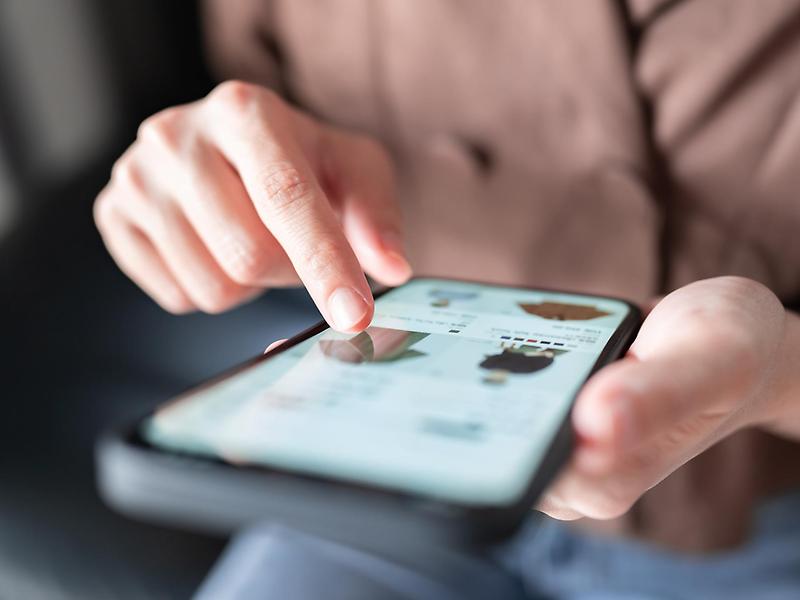23. June 2023 By Peter Fey
The Golden Age of B2B influencers - part 1
Most companies have incorporated influencers as an integral part of the company’s marketing mix, whether to increase brand awareness, improve interactions with customers or directly promote sales. Many influencers have become brands in their own right in B2C in particular, now adorning advertisements and products in channels other than the typical ones, such as Instagram, YouTube or TikTok.
However, their number has become so large that it is difficult to keep track of them or to find the right influencer for your own brand without suitable technological tools. We at adesso have it very easy thanks to our Birdies (reachbird solutions) and their RTECH technology. Open the tool and enter your ideas using the 35 filters. With more than six million total entries, you will find a suitable selection here.
In my opinion, the most exciting campaigns were always the ones we implemented for strictly B2B brands. Influencers could still be found here, even for the most exclusive sectors, although the selection process was considerably more difficult.
In these cases, the focus is often on possible alternatives: adfluencers, corporate influencers or even C-level influencers.
adfluencers, corporate influencers or even C-level influencers
Adfluencers are people who are not (yet) influencers themselves, that is, ones who have not built up a reach but who can present products, facts or services in such a charismatic and likeable way that they can become the ideal ambassador for brands. Adfluencers often know the topics they talk about well and are often recruited from the company’s own ranks, which brings us to the corporate influencer.
Most of us have seen it before: there is always a colleague who can explain their subject in their sleep and their excitement is palpable. So why not use this passion and let a real expert present what your own company offers. It sounds easy; unfortunately, it is not always. There is often a lack of knowledge about how to use social media networks and what needs to be taken into account, and often there is also an insecurity about publishing anything (work-related) at all. At this point, the experts for social media, social paid and influencers, but also the HR department need to work together to develop a strategy to support the in-house influencers.
Sometimes the issue is brought before senior management and becomes a matter for the boss, which brings us to the C-level influencers.
Here, one or two people will rightly ask themselves whether a C-level even has the time to be an influencer. A few ‘short’ posts here and there can take a lot of time: taking pictures, selecting the right ones, copywriting, proofreading, publishing and then, if necessary, interacting with the people who reply to the post. If the C-level influencer tries to manage this alone, it will definitely exceed the amount of time they had originally planned. But with a well-coordinated team of experts to back up this influencer, it works surprisingly well. Our social media team has been successfully supporting our two board members Volker Gruhn and Dirk Pothen and our customers’ C-level influencers with a strong focus on the LinkedIn channel for quite some time.
More than two years ago, to build more visibility for our board members and their issues via social media, we set LinkedIn, or the Top Voices LinkedIn programme, as the goal of our strategy.
The programme itself is much older and quite simple to explain. Every year, LinkedIn – as the most important B2B social media channel – awards people who are pioneering their industry and initiating dialogue through their posts. Only one person per country and company can be named a Top Voice. This person then receives the official badge and the corresponding support or additional reach from LinkedIn. Our first choice was Volker, but we soon realised that it makes sense to support other people as well, in order to be able to cover more topics.
The coordination between the board members was not the biggest challenge we always faced. They quickly got on well after a short period of time, as they both give talks about their topics. Our social media team was then able to adapt this for optimal performance on LinkedIn.
However, it was always difficult to build up the reach through support with the media budget. There was simply no possibility to leverage sponsoring as a means to pass on the responsibility of the posts to people who also deal with these topics. We were able to indirectly link to the posts with the company page as adesso; but otherwise we only had the standard LinkedIn functions such as mentions and shares.
This has changed in the meantime. Thought Leader Ads, the new ad format that LinkedIn has been offering since 6 June 2023, could set new standards in the B2B influencer sector.
It means that if people’s posts meet the relevant requirements, they can now be advertised directly.
The prerequisites here are more technical in nature. The person must be linked to their company on LinkedIn and be given the appropriate rights on the company page to be able to sponsor content by displaying it in their feed. A written declaration of consent was also required for the use of the ads for beta testing. In the meantime, it has been dropped.
The support team of experts then takes over the placement of the ads directly via the ad manager of the company site.
Apart from a note about the sponsorship, the sponsored post then appears as if the person (the C-level or corporate influencer) had published it themselves.
In this manner, the thought leader’s voice can be given much more weight or reach and this person can better place their topics so they are visible for the relevant target groups. It means that even more than one person can be used per company, in contrast to the Top Voices programme. This also makes the ad format particularly interesting for increasing exposure of your own corporate influencers from the various specialist areas.
This is also the great strength of this new format, especially in B2B. The ‘burden’ can be spread across several shoulders instead of relying on a single influencer, and the company can cover a wider range of expertise, enabling the creation of a much more authentic external image of a brand.
This also mitigates some of the concerns we often encounter when we provide consultancy services regarding corporate influencers.
Many brands shy away from the path of building up an influencer for fear of losing them again in the event of a possible change of employer. In addition, the identification, training and organisation/control of corporate ‘social’ influencer content in particular is a challenge. But more about that in part 2 of this blog post.
I look forward to your feedback: are you already dealing with corporate influencers in your company or are you still dragging your feet?
You will find more exciting topics from the adesso world in our latest blog posts.

